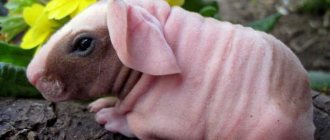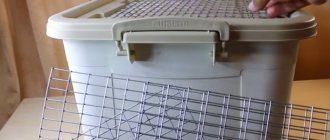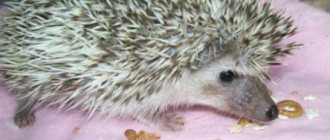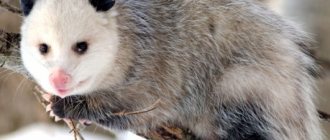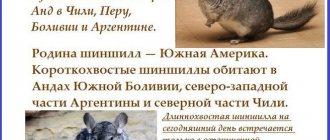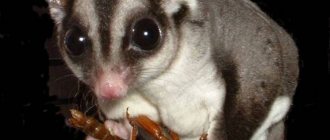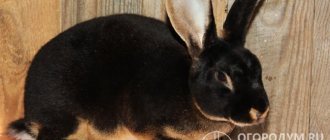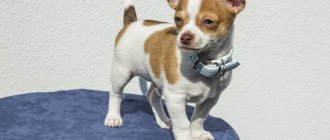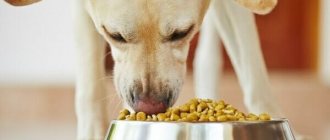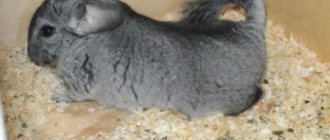The sugar glider, also known as the marsupial flying squirrel, is a common inhabitant of eucalyptus forests. Lives mainly in Australia and New Guinea. This sugar squirrel is a very cute creature, with big, sweet eyes.
They live mainly in hollows, but sometimes they prefer to live in nests, and sometimes they take the nests of some birds for themselves. The animals are in fact only nocturnal, returning home at sunrise to have a good rest and gain strength before the next night.
It’s not for nothing that they are active only at night. Their body is designed this way, their eyes are adapted to see perfectly in the dark, although they can also rarely stay awake in the light, but this is only the case with the sugar glider at home.
Excellent eyesight, acute hearing, sense of smell and high maneuverability allow them to easily hide from many predators. Recently, people have often tried to use these creatures as pets.
And those who start them always ask themselves a question. But how to feed them? What do sugar gliders prefer? And what should you not give them?
Description
The marsupial flying squirrel has a tail and body of approximately the same length - from 15 to 21 centimeters. The animal has short and soft fur, most often ash-colored. The possum's belly is light, and there is a dark stripe on its back.
Externally, the flying squirrel resembles a squirrel, but it is impossible to confuse them, since the possum has a number of features:
- between the front and hind legs on the sides the animal has a membrane that allows it to fly;
- the flying squirrel has large, round and very mobile ears;
- This animal has large dark eyes.
The exotic pet is able to bend its tail and hold small objects with it. And due to its sharp claws and fingers, which have a special structure, it handles food very deftly. Reviews from sugar glider owners often mention how fun it is to watch this animal eat food.
Hidden features of Australian flying squirrels
When purchasing an animal, the breeder is often not interested in all the features inherent in the exotic creature. Or, an unscrupulous seller simply does not warn about what the owner of a sugar glider may encounter in reality.
Features of the animal:
- the body of the possum is small, but increases in volume due to the lateral flying membranes;
- “wings” are attached to the toes of the front and hind paws; at rest they look like skin fringes; if possible, the squirrel glides at a distance of up to 50 m. Therefore, there should be no experiments with open balconies and windows;
- the female has a pouch on her stomach with four internal nipples, and the male has a “pompom” with testicles and a forked penis;
- The male has many glands distributed throughout his body, which look like alopecia with an oily liquid with a muxic odor. Moving around the house, they mark the owner and the surroundings.
The flying squirrel molts twice a year. Violation of molting occurs due to improper maintenance, feeding, stress or non-compliance with the temperature regime. She sees well in the dark and is active from 9-10 pm. Vocalization is well developed, the tonality of sounds is high and varied - from barking and squealing to chirping, whistling or grinding.
Sugar gliders can be kept individually or in groups consisting of one dominant male and several females (up to 5-6 pieces). It is not recommended to keep two males in a cage at the same time; conflicts will inevitably arise.
The sugar glider does not like to swim and cannot swim. If the feeding regime is disrupted and food is not given for a long time, the animal falls into a pseudo-lethargic state, in which it can remain for almost days.
It is important to know! The most common diseases encountered when keeping flying squirrels at home are depression (lack of communication), diarrhea/constipation, obesity, calcium deficiency and dehydration.
About life in nature
In nature, flying squirrels are found in the forests of Australia, preferring eucalyptus trees. They spend almost their entire lives on them. During the day, the animals sleep in their shelters, and at night they are active. Possums feed on insects, small animals, juices and fruits of some plants.
Flying squirrels live in groups of seven. Each group has a dominant male and babies up to a year old. A distinctive feature of the group is its specific smell. It is the male who marks family members and his territory. The smell is considered a kind of sign of belonging; strangers are identified and expelled by its absence.
The energy of flying squirrels depends on the weather and time of year. During rainy and cold seasons, animals become lethargic and may even hibernate. This is caused by a lack of nutrition - this is how possums save vital energy.
Females
In females, like in males, there are many, but less pronounced, exocrine glands located on the body. The vagina and uterus of female possums are bifurcated and separated from each other, similar to the male’s penis. On the belly of the female short-headed flying squirrel there is a pouch, inside it there are 4 nipples. The bag should not be red or swollen, otherwise this is evidence that the animal is unhealthy.
Flying squirrels have a short gestation period - up to 17 days. As a rule, from 1 to 3 cubs are born, the size of a steamed grain of rice. After giving birth, the female possum licks the cubs and licks her fur, smoothing the way from the newborns to the pouch. Along this “path” they move to a cozy “house”, where they attach themselves to the nipple, after which it swells. They will remain in this position until the moment they are able to get out. The “journey” takes about 5 minutes, and the babies will mature in the bag for another 60–70 days.
After leaving the “house”, the cubs need another 8 weeks to adapt to the outside world and switch to the diet for adults. While this is gradually happening, the babies continue to be on a milk diet.
Conditions for keeping a sugar glider
Nowadays it is very popular to keep flying squirrels at home. After all, her cute appearance leaves no one indifferent. It should be noted that this animal, like any other animal, has its advantages and disadvantages. Before purchasing, you should study them and only then make a purchase.
According to reviews from sugar glider owners, males mark their territory with a rather bad-smelling substance. Not everyone will like this. You will have to wash the cage and tray very often. It should be understood that a flying squirrel is not a cat or a dog; it cannot be trained to relieve itself in the right place. The animal will definitely do this not only in the cage, but also while walking and in flight. Thereby dirtying furniture, floors, and sometimes the owner himself.
Often in reviews of the sugar glider, the animal’s evening activity is noted. When purchasing an animal, you should be prepared for night noise.
At home, the animal lives longer than in the wild. Of course, the length of life in an apartment depends on proper care and nutrition, but it is still worth keeping in mind that the flying squirrel lives from 9 to 12 years.
Characteristics of the rodent: dimensions and features
The animal is very small, only up to 21 cm, but its tail also grows up to 20 cm in length, while it is very mobile and acts as a “fifth paw”. The sugar glider uses it deftly, picking fruits from trees. The weight of an adult reaches up to 160 grams.
The color of the possum is gray-silver, the fur is very thick, and there are black stripes on the body. On the belly side the fur is yellowish-white. On the muzzle there are brown stripes from the nose to the back of the head. Very rarely there are albino animals or individuals with yellowish-brown fur.
What a flying squirrel breeder needs to know about pet aggression:
- The possum bites if it is very frightened. Here it is important to give it time to adapt when purchasing, or not to disturb a pregnant female or an individual with cubs again;
- “friendly bite” speaks of a special disposition of the animal, or an accidental bite if the sugar glider takes a treat from the hand;
- aggression can manifest itself when the animal “does not recognize” the owner, the owner smells strongly of perfume, cigarettes, alcohol, etc. It is advisable not to change your habits when communicating, to wear neutral-colored clothes, and not to make sudden movements. When getting ready to go out and generously shower yourself with perfume, it is better not to approach the cage and not provoke the possum’s discontent.
The lifespan of a sugar glider in captivity is much longer than in the wild. Having a lot of natural enemies, it rarely lives up to 8 years, but in an apartment it can live up to 15 years, subject to all standards of maintenance and feeding.
If a marsupial flying squirrel is raised from babies, it quickly becomes affectionate, sociable, reacts to changes in voice intonation and can learn simple commands. But the animal is a nocturnal animal and its active period occurs when a person is sleeping. If he is alone in a cage, he gets bored, makes a sound similar to barking, and rustles. The solution is to have enough space so that sounds do not reach the bedroom, or purchase two sugar gliders and equip a cage with “entertainment”.
But the animal is very social and requires attention, so it cannot be left without communication with its owner for a long time. He becomes lethargic, uncommunicative, and becomes depressed. For this reason, it is not recommended to get a sugar glider for people who spend most of their time at work or outside the home and only come into the apartment to sleep.
It is important to know! The sugar glider does not need standard vaccinations (against plague, rabies, etc.). He is not dewormed.
Where to keep a sugar glider
Keeping a flying squirrel in an apartment requires a lot of free space, as animals love to fly. The cage should also be spacious. There are special requirements for it:
- rods with PVC coating, the distance between which should be from 10 to 13 mm;
- reliable lock;
- drinking bowl;
- small feeders for different types of food;
- climbing equipment;
- scratching post;
- a house with an opening in which the flying squirrel will hide during the day;
- various attractions (wheel, etc.);
- Soft material is placed on the pallet in which the animal will not get entangled.
The cage and its contents must be made of safe material so that the animal does not get poisoned if it starts to chew something.
Home UFO: how to keep and feed a flying squirrel
In nature, these animals live in packs, so they painfully endure loneliness. They need intense communication, without which they become depressed. So the flying squirrel definitely needs someone for company, best of all a friend or girlfriend. Otherwise, be prepared to play the role of a human possum. And preferably closer to the late time of day, because during the day the animal rests, and he does not like to be woken up. If the baby wants to play, he will certainly give a sign - he will bark in a thin voice, like a pocket dog. In general, there are many sounds in his arsenal: purring, grumbling, chirping and even plaintive crying.
The possum is light, weighing only 100-150 grams, and small - 15-20 centimeters, if you count without the tail. Although it is absolutely impossible without a tail, because it not only serves as a steering wheel in flight, but also helps to carry all sorts of important things - from fruits to branches.
For a happy life, a sugar glider needs a comfortable enclosure, and the distance between the bars should be no more than one centimeter, otherwise the baby will get out and get lost in the apartment. Rest assured, the flying squirrel will find a reliable shelter - and discovering one hundred grams of happiness is not the easiest quest. The main thing is not to accidentally throw it away with a bunch of unnecessary things. A baby can hide in a closet, settle in a jacket pocket, stick its curious nose anywhere, even into an outlet or into a trash can!
It is advisable to furnish the possum’s home comfortably. A hanging house will come in handy - a kind of shelter in which you can hide from annoying owners and bright light, a hammock, as well as twigs, ladders, and snags. And, of course, various safe and very durable toys, because the baby’s teeth are very sharp.
The character of the animal is quite complex and independent, like all wild animals. He only seems defenseless, but he knows how to defend his rights. It is better not to try to pick him up by force. If the possum doesn’t like something, it may bite painfully.
The pet is picky when it comes to food. You cannot feed a flying squirrel from the table. Her menu should include fruits, lactic acid products, live food - grasshoppers, worm larvae, crickets. These delicacies are not for squeamish owners. Sometimes it's a good idea to pamper your pet with dessert - cookies, honey, yogurt or baby food.
With a lot of patience and a lot of time, the sugar glider can be tamed. He will even respond to a nickname and come running when called. But you shouldn’t count on the creature to follow all commands like a dog or cuddle like a cat. Teaching a sugar glider to relieve its natural needs in a litter box is an almost impossible task. The animal relieves itself wherever it wants, including in a jump. The marks that the pygmy flying squirrel leaves are very odorous.
But your own smell is one thing, and someone else’s is another. The possum may not like the scent of your new perfume or bath cleaner, and will find an opportunity to loudly say so.
The enclosure of a microscopic resident must be kept clean, otherwise an unpleasant odor will permeate the entire house. Of course, it is necessary to immediately remove the odorous marks that the possum leaves everywhere - on the owner’s favorite sofa, on clothes, and even on the chandelier. But it is not necessary to wash the animal itself: firstly, it doesn’t like it, and secondly, it cleans itself perfectly without outside help.
This type of domestic UFO lives for more than ten years; there are even real elders of seventeen years of age. And at any age, a big-eyed creature on its own magic carpet evokes affection. These are moments of happiness. But, as they say, you have to pay for everything!
Dear readers!
Send your questions and suggestions to [email protected]
How to care for a flying squirrel
Judging by the reviews about the sugar glider, caring for it at home is not as scary as it might seem at first glance:
- Once every 3-4 days it is necessary to wash the cage;
- constantly provide the animal with the opportunity for communication and movement;
- when walking, remove traumatic and breakable objects from the room;
- when walking, it is worth covering mirrors and glass with curtains or fabric so that he does not crash into them;
- there is no need to bathe or comb the animal;
- The animal does not need vaccinations;
- If the animal does not grind its claws down on its own, they must be trimmed.
Video review of a sugar glider in the house
An acquaintance bought a book about the sugar possum animal in English and there was a need to translate the text. For help, I turned to the English language school https://britishskylines.com.ua/ with experienced teachers. The school has various training programs: spoken English, for adults, English with a native speaker, quick intensive courses, for beginners, for schoolchildren, individual lessons, lessons via Skype. Prices for English language courses are affordable and below market prices and will definitely please you.
What to feed your sugar glider
Reviews from sugar glider owners indicate that the main rule for a healthy diet for a flying squirrel is the exact ratio of proteins and carbohydrates: a ratio of 7 to 3. Water should always be present in the animal’s drinking bowl. Food should be given only while the animal is awake; it must be removed in the morning. Having food during the day can make your pet fat.
The possum's diet consists of fruits and insects. Sometimes you can give honey, plain yogurt and poultry without spices. Feeding what is on people's tables is strictly prohibited! Also, you should not give the animal grapes and a lot of nuts.
Sugar glider: who he is and his features
The animal belongs to the genus of marsupial flying squirrels and is presented in the classification as “sugar flying squirrel”. You can also find names:
- Australian flying squirrel;
- short-headed flying squirrel;
- dwarf flying squirrel.
In nature, the animal’s habitat is Australia, New Guinea, that is, the climate that suits the possum is far from that found in Russia, even taking into account the southern regions. He received the nickname “sugar” from his food addiction - he loves sweet nectar, tree sap, ripe fruits rich in fructose.
Breeding
Breeding possums is far from the most profitable and easy business. There are a number of good reasons for this:
- To maintain a pair, decent conditions are required (food, care, cage);
- a pregnant female requires additional food costs;
- finding future owners is not an easy task;
- veterinary care is very expensive;
- the character of pets engaged in raising offspring changes for the worse in relation to humans;
- Caring for a couple requires isolated space and a lot of time.
Sugar Possum: Description
The sugar squirrel or marsupial flying squirrel lives in the northern and eastern regions of Australia, New Guinea, Tasmania, and the islands of the Bismarck Archipelago.
It is an arboreal marsupial and is the smallest and most common species of possum. He got his name because of his ability to float through the air and because of his love for sweets. The weight of a possum depends on gender and ranges from ninety to one hundred and sixty grams. It has a thin, slightly elongated body. The length of an adult animal can reach forty-two centimeters , of which about half is the fluffy tail. The coat of possums is usually gray-blue, but there are animals with yellow or yellow-brown fur. It is very rare to find albino possums.
Its fur is thick and soft. There are brown stripes on the back and face of the animal. The abdomen is white, with a cream tint. Possums have a small, slightly pointed muzzle. Its ears are quite large; they are capable of turning like locators in the direction of the outgoing sound. Large black eyes are surrounded by black rims that extend to the ears. They help you see perfectly in the dark.
The limbs of sugar gliders are very well developed. On each paw they have five long, thin fingers with sharp claws. Such “aristocratic” fingers allow you to get larvae and small insects from under the bark, and sharp claws allow you to hold on to flexible branches well.
Interesting: How many legs do a spider and a tick have and how to distinguish these animals
Feeding
The most important question that the happy owner of a sugar glider will have to face is what to feed the animal. Proper nutrition is the key not only to health, but, consequently, to a long and happy life. The smell and mood of your pet also depend on this.
In the wild, the sugar squirrel is an omnivore. The main part of its diet consists of fruits and insects. When feeding, you should adhere to the following principles and rules:
- The 70 to 30 rule – 70% of the diet is protein, the remaining 30% is carbohydrates.
- The feeders are filled with food and the drinking bowl with fresh water immediately before the flying squirrels wake up - at approximately 9 - 10 pm. In the morning, you need to clean the feeders and leave the water. If a possum has access to food 24 hours a day, it will suffer from obesity. Representatives of this subspecies are able to wake up in the daytime and sleepily drag a treat into the nest, falling asleep on the move, often with an unchewed piece of food in their paws. The maximum that can be left for the possum during the day is a piece of fruit or dried fruit, as well as a little juice diluted with water.
- If your pet doesn't drink for a long time, don't be alarmed. Sugar squirrels can get enough moisture from fruits. Despite this, water in the drinking bowl must be constantly present in the cage. It is better to use filtered or bottled water and change it at least once a day to prevent harmful bacteria from growing in it.
- Foods from the human table are prohibited for feeding: fatty, spicy, fried, salted, sausages, etc. The maximum that can be allowed is chicken or turkey meat, cooked without salt and spices.
- Sweets (honey, fruits) can be given to the animal in limited quantities - as a treat, to support the female during pregnancy and feeding the cubs.
- The food should contain as much calcium as possible (the domestic sugar glider is very sensitive to its deficiency) and as little phosphorus as possible.
- All vegetables and fruits should be cut into fairly large pieces that will be easy for the squirrels to pick up in their paws. The animal will not like small pieces.
Products necessary for the normal development of the dwarf flying squirrel:
Protein
- Insects – you can feed your pet live grasshoppers, fly larvae, crickets, mealworms and zoophobas (Latin worms, a favorite delicacy of the sugar glider). The daily norm for an adult older than six months is 2–3 zoophobass per day, 5–8 mealworms or 1–2 large banana crickets. All of these insects can be purchased at a pet store. Many sugar glider breeders breed gliders in plastic containers with sawdust. They eat cucumbers, apples and cereals. They can live up to 3 months. You can also feed the possum no more than once a week with one-day-old chicks or other small chicks.
- Meat - about 30 grams per day per individual, boiled without salt and spices, lean (chicken or turkey).
- Fermented milk products - no more than 2 times a week: natural low-fat cottage cheese, kefir, yogurt, fermented baked milk, children's curds and yoghurts without preservatives and additives, including sugar-free.
- Quail eggs without shell - no more than once every 7-10 days.
- Baby food – puree for first feeding, possibly with meat.
- Porridge - once every 7 - 10 days, they must be cooked exclusively in water, since milk is extremely harmful for flying squirrels. The healthiest ones are oatmeal and buckwheat, you can add fruits, dried fruits, candied fruits, honey (literally a drop per serving).
Carbohydrates
- Whole fruits and vegetables are the main source of carbohydrates. A possum needs about 35–40 grams of fresh, unprocessed fruits and vegetables of various types per day. These can be peaches, oranges (if the possum is older than six months), kiwis, apples, pineapples, bananas, avocados, watermelon, melon, cucumbers, tomatoes, sweet potatoes, mangoes, papaya, carrots. Products with a laxative effect (beets, pears, plums) should not be offered to your pet.
- Juices and fruit purees – up to 20 ml per day. It is advisable to give the animal freshly squeezed juices diluted 1:1 with water, or juices and purees intended for children under 3 years of age, without preservatives and sugar.
- Any dried fruits, except prunes - 1 - 2 pieces per day (cherries, pineapple, dried apricots, etc.).
Treats
- Nuts – 2 small or 1 large nut per week (peanuts, hazelnuts, pine).
- Honey - only as an additive to the main food, about 1.5 teaspoons per week.
- Drops – no more than one per day.
Vitamins and minerals
Regular intake of calcium and multivitamins is recommended. Usually they are crushed into powder, rolled into insects and fed to pets. Some breeders dissolve the powders in sweet fruit juice or puree. The exact dosage must be selected based on the weight of the animal and the instructions on the package. You can purchase these supplements from online stores specializing in exotic animals or from veterinary pharmacies.

